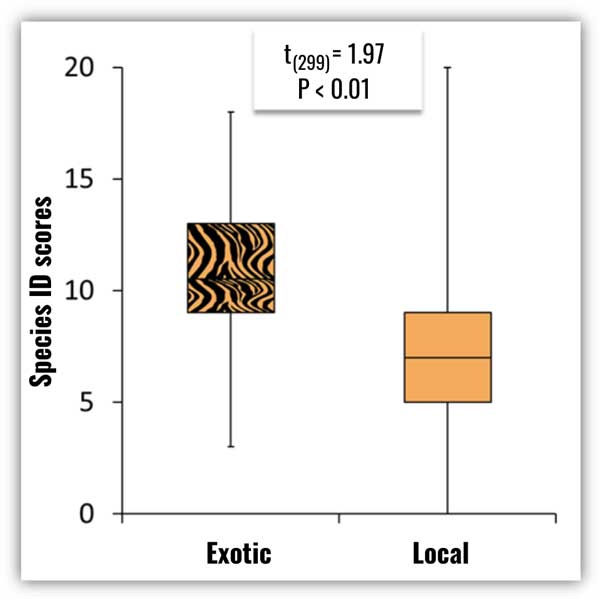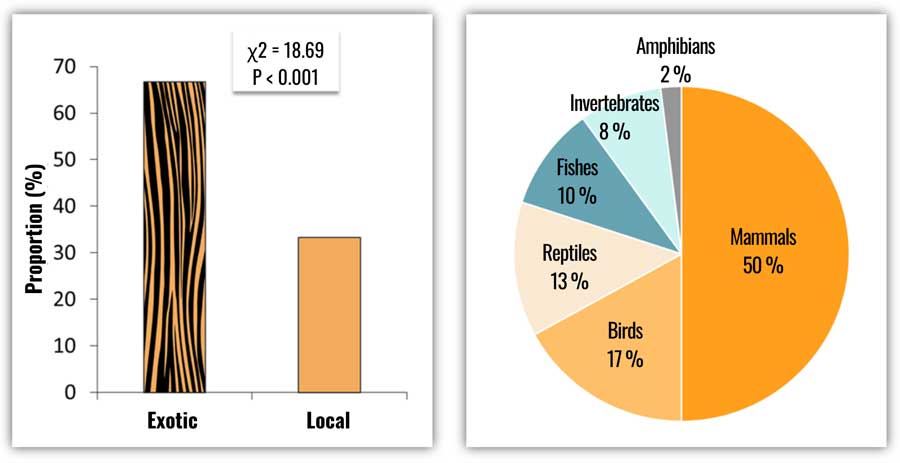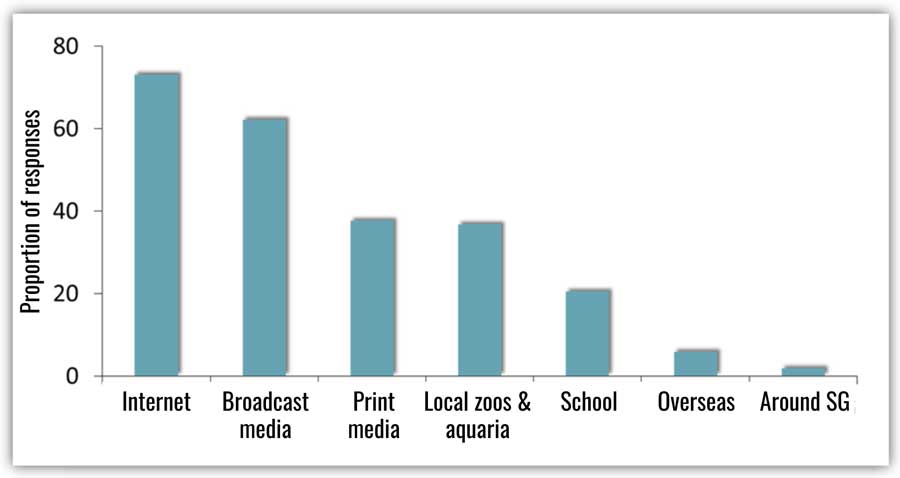Nicolette LOO, Bachelor of Environmental Studies student – AY 2016/17
How well do NUS students know wildlife and which species do they prioritise for conservation?
In 1968, Baba Dioum famously said “In the end, we will conserve only what we love; we will love only what we understand and we will understand only what we are taught.” Meaning, humans are more likely to like and care about things we’re familiar with, and these preferences dictate which species we prioritise for conservation.
In 1975, Robert Pyle, a lepidopterist, coined the term ‘extinction of experience’ to describe humanity’s growing disconnect from Nature and apathy about its worth – a phenomenon he linked to urbanisation. If Baba Dioum’s quote reflects reality (and it may, given the emphasis on protecting flagship species), then we expect any extinction of experience to erode support for conservation.
To Nicolette, Singapore (SG), with its high biodiversity, but 100 % urbanisation rate (all residents are urbanites) seemed like a good location to assess the link between knowledge of animals and concern for their conservation. She was inspired by this study of French children, who prioritised conserving exotic species over local species, regardless of true extinction risk. She recruited 300 of her NUS peers, and asked them questions to assess the following:
1
Are they more familiar with exotic or local wildlife? As this boxplot shows, the answer is exotics. This may reflect a lack of direct contact with Nature all amid greater exposure to more widely available information on exotic species.

2
Which species do they prioritise for conservation? And the answers are exotics (as the bar chart shows), especially mammals (pie chart).

3
Where did they learn about the species mentioned in question 2? Mainly on the Internet (as the bar chart shows). The answers to questions 2 and 3 suggest low knowledge of local wildlife. Why is this the case? Several respondents suggested that because pest species are the animals that most residents encounter most often, the dominant views are that SG has low biodiversity and that its wildlife is not at risk of extinction – neither view is accurate. And this population’s conservation priorities may reflect the fact that the Internet (and conservation campaigns) most often feature exotic, flagship species, especially mammals. This is a problem given that cycads, corals and amphibians are the most threatened groups.

4
Does their relative ability to identify species (as in question 1) influence which ones they prioritise? The answer is yes, but weakly.
5
Does knowledge of wildlife affect conservation attitudes? Again, the answer is yes – the more they know about local species, the more likely they are to want to conserve them.
Let’s put this in context. In 2020, 77 % of species in SG are threatened – meaning at risk of local or global extinction, based on their status in the SG Red Book of Species and/or on the IUCN Red List. Yet, in this nation, citizens have a fairly strong influence on conservation efforts. If knowledge is a key predictor of pro-conservation attitudes, then Nicolette’s results speak to the need to bridge the human-Nature disconnect via increased emphasis on environmental education. And given the well-known link between experiential (hands-on) learning, especially involving time spent in Nature and environmental consciousness demonstrated in many studies, and publicised by Richard Louv (like ), it seems programmes should really get kids outside, though they should also leverage on the influence of the Internet and the media, which are so important in the lives of locals.
Nicolette is an urban planner with the Urban Redevelopment Authority of SG.
